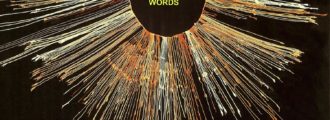Forms of formless knowledge
“Digo la tara, y no me entiende nadie; digo la tara y la rejama, y ya me entienden muchos; digo por fin la tara y la rejama, el tomero y el romillo y veo que me entienden todos. El injusto poder de convicción de los sistemas viene del hecho –por lo demás, epistemológicamente necesario– de que el cerebro humano sea tan inercialmente, tan formalísticamente, analógico y combinatorio.”
(Rafael Sánchez Ferlosio, Vendrán más años malos y nos harán más ciegos, 1993)
[“I say rockrode, and nobody understands me; I say rockrode and broon and now a lot of people understand me; finally, I say rockrote and broon, thyne and rosemedley and I see that everyone understands me. The unjust power of conviction of systems derives from the – otherwise, epistemologically necessary – fact that the human brain is so inertially, so formalistically, analogical and combinatorial.”
(Rafael Sánchez Ferlosio, More Bad Years will Come and Make Us Blinder, 1993)]*
Words, the very stuff of language, make it possible to articulate argument and debate. Words themselves are also the subject of argument and debate. There never seems to be agreement on what one is trying to say with them. At the same time, everybody thinks they know very well what they want to say when they speak. Polemical, ambiguous and polysemic, words in any case sketch out a very precise battlefield.
There is an intersection of meanings and etymologies in the word that are lost in other languages: the adjective [informe – formless], deriving from the Latin informis, which indicates something in a “vague and indeterminate way” and the noun [informe – report], deriving from the Spanish verb “informar” and from the French informer, which speaks of a document that reports on a concrete affair. In 1929, Georges Bataille turned the adjective into a noun, in this way adding further polemic and ambiguity to the discussion. The term, a central element of his Critical Dictionary, was born in reaction to the characteristic demand of formalism, a dominant tendency of modernism, that everything should become form. It was also born as “a term that serves to disqualify”.
In an attempt to escape from the certainty offered by taking sides, Forms of formless knowledge appropriates the words “form” “knowledge” and “formless”. Not so as to invoke them in meanings that are already closed and pre-established, but in order to twist them and use them as instruments that help in detecting new modes of generating knowledge linked to artistic production.
Following this idea, a series of initiatives belonging to different contexts that propose new paths of knowledge based on practice have been invited to take part. The program is presented as a space of experimentation based on the encounter between experience and ideas, where translation will be the indispensable methodology for making visible the specificity of each proposal. Forms of formless knowledge is begun as a line of research that attempts to promote and keep alive the initial definition of bulegoa z/b.
Working in a context that is distant from the modern debate to which the terms of the program’s title seem inevitably to refer, the projects invited to Forms of formless knowledge share the same attitude of questioning: the consideration that, besides the battlefield provided by words, there are other battlefields for discursive development: recourse to translation as a critical methodology; the attitude of resistance to a purely formalist future, implicit in every project that attempts to be critical; the use of procedures for the construction of subjectivity such as displacement, declassification or estrangement and the use of the archive as a device permitting new formalisations and orderings; and the value conceded to every operation of publishing and translation as an attempt, in Brecht’s words, “to restore the essentially ‘critical’ value of all historicity”.
* The author has taken the names of four plants and bushes common to the Spanish countryside – jara (rockrose), retama (broom), romero (rosemary) and tomillo (thyme) – and has deliberately deformed them into tara, rejama, tomero and romillo in order to show that, although unrecognisable individually, they become recognisable when placed in a series. (Translator’s note)









